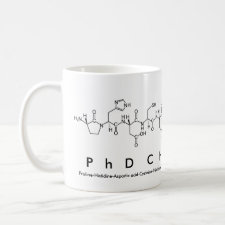
Authors: Verheyen E, Schillemans JP, van Wijk M, Demeniex MA, Hennink WE, van Nostrum CF
Article Title: Challenges for the effective molecular imprinting of proteins.
Publication date: 2011
Journal: Biomaterials
Volume: 32
Issue: (11)
Page numbers: 3008-3020.
DOI: 10.1016/j.biomaterials.2011.01.007
Alternative URL: http://www.sciencedirect.com/science/article/B6TWB-5230FKM-1/2/f60f8f5aa14d2198313b2717510fe598
Abstract: Molecular imprinting is a technique that is used to create artificial receptors by the formation of a polymer network around a template molecule. This technique has proven to be particularly effective for molecules with low molecular weight (<1500 Da), and during the past five years the number of research articles on the imprinting of larger (bio)templates is increasing considerably. However, expanding the methodology toward imprinted materials for selective recognition of proteins, DNA, viruses and bacteria appears to be extremely challenging. This paper presents a critical analysis of data presented by several authors and our own experiments, showing that the molecular imprinting of proteins still faces some fundamental challenges. The main topics of concern are proper monomer selection, washing method/template removal, quantification of the rebinding and reproducibility. Use of charged monomers can lead to strong electrostatic interactions between monomers and template but also to undesired high aspecific binding. Up till now, it has not been convincingly shown that electrostatic interactions lead to better imprinting results. The combination of a detergent (SDS) and AcOH, commonly used for template removal, can lead to experimental artifacts, and should ideally be avoided. In many cases template rebinding is unreliably quantified, results are not evaluated critically and lack statistical analysis. Therefore, it can be argued that presently, in numerous publications the scientific evidence of molecular imprinting of proteins is not convincing
Template and target information: Review - MIPs for proteins
Author keywords: molecular imprinting, protein imprinting, Crosslinked polymers, functional monomers, Template removal, Protein-polymer interaction



Join the Society for Molecular Imprinting

New items RSS feed
Sign-up for e-mail updates:
Choose between receiving an occasional newsletter or more frequent e-mail alerts.
Click here to go to the sign-up page.
Is your name elemental or peptidic? Enter your name and find out by clicking either of the buttons below!
Other products you may like:
 MIPdatabase
MIPdatabase









